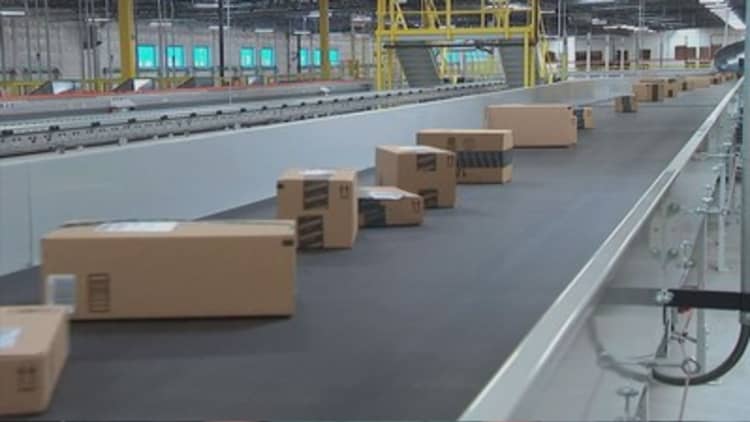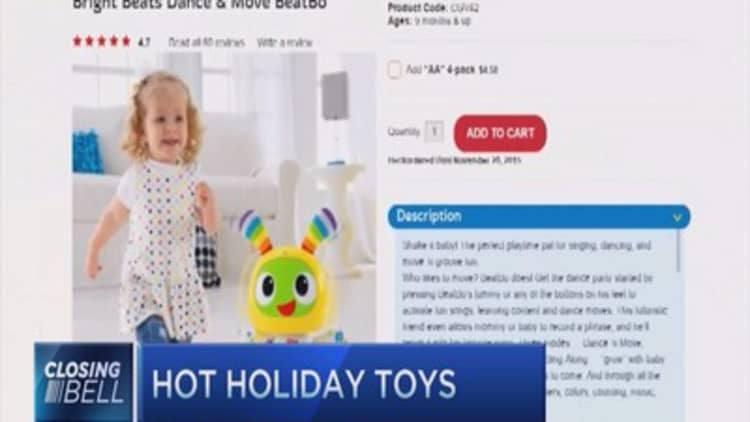
The Hindu festival of Diwali is a time of celebrating wealth, which means there's a wealth of reasons for retailers to celebrate.
The highlight of a two-month religious festive period that began in October, Diwali, also known as Deepavali, is considered an auspicious time to buy big-ticket items such as gold, consumer electronics and household products.
And in India, which was spared the worst of the summer's financial markets turmoil, has economic growth targets of 7 percent-plus and interest rates that are heading down rather than up, consumers have had incentives to splurge.
"The consuming power, especially with fast-moving consumer goods or ground goods or technology items like mobile phones, is absolutely up there," Dheeraj Sinha, author of Consumer India: Inside the Indian Mind and Wallet, told CNBC.
Sinha explained that consumption during the festive period was seen as a celebration of wealth, progress and improvement.
"That's what the idea of Diwali has come to be," he said. "Because it's a festival where you worship the goddess of wealth, Lakshmi."
So with India preparing to celebrate Diwali on Wednesday, Indian e-tailing giants Snapdeal, Amazon India and Flipkart have bombarded consumers online and offline with enticements to buy, buy, buy.
Amazon India went heavy on promotions and discounts to usher in the festive season, holding a "Great Indian Festive Sale" as well as a "Great Indian Diwali Sale."

An Amazon India spokesman said: "October brings the biggest-ever festive season, in terms of traffic, unit sales, revenues and new customers for Amazon.in." The two sale events saw more new customers come to Amazon India's site than during the entire 2014 festive season, the spokesman added.
Amazon's competitor, Snapdeal, saw a similar spike in sales.
"This festive season, our sales have further grown by 700 [percent]," said Rahul Taneja, vice president of category management at Snapdeal. "We have seen 17 to 20 [times] growth compared to normal business days in some categories like furniture, home furnishing and women's ethnic wear."
Taneja told CNBC that Snapdeal had shipped about 11 million items during its Diwali sale, which began on September 28 and is still going, processing about 300 orders per second during the busiest period, compared to 30 per second during the 2014 festive season.
In a market where timing is key, Snapdeal uses predictive analysis to save time on the processing and dispatch of orders.
"This helped a lot of sellers to keep their orders ready to be shipped, based on the demand forecast data provided to them by Snapdeal," Taneja said, adding that about 99 percent of orders were shipped the same day.
Taneja said Snapdeal also planned to invest $300 million this year to strengthen its logistics and supply chain in order to cope with the high volume of orders during festive periods.
So what are Indian consumers buying?
Traditionally, the festive season triggers a strong demand for gold. And while people still purchase gold during Diwali, Sinha said the consumption pattern was shifting toward lifestyle products such as mobile phones, televisions and cars.
"Products which give consumers a sense of upgrade or a sense of moving up [the social ladder] are eating into traditional products like gold," he said.
Consumer electronics have been a hit among Indian shoppers this year.
Amazon India's spokesman said customers purchased as many mobile phones in the first three days of the festive period as in all of the rest of September. Snapdeal also saw a jump in purchases of mobile phones, power banks and laptops.
Both Snapdeal and Amazon India also reported an uptick in orders coming from India's Tier II and Tier III cities this year. The tier system, created by the Indian Government, ranks cities based on population size, with Delhi, Mumbai and Bangalore in Tier I.
Sellers on Amazon received orders from approximately 2,100 towns and cities across India, while Snapdeal said two-thirds of its order volume came from outside the major cities.
People who lived outside India's cities were more likely to shop via apps due to limited local shopping alternatives, especially in electronics and apparel retail, a recent Nielsen India report found.
Amazon India and Snapdeal said mobile apps contributed heavily to their Diwali sales volume this year, a fact backed the Nielsen report, which showed the proportion of smartphone users using shopping apps had jumped from 21 percent in 2014 to 54 percent this year. Amazon said 70 percent of traffic to its site came from mobile.
E-tailer Flipkart leads user engagement in the mobile space, according to the Nielsen data, which showed users spent, on average, 59 minutes a month on Flipkart's mobile platforms, 37 minutes on Amazon India, and 35 on Snapdeal.
All this e-commerce promotion and system improvement costs, however.
Sinha noted that brands such as Snapdeal, Amazon India and Flipkart appeared to be playing a short game.
"They are not [yet] playing a profitability game," he said, referring to the fact that Indian e-commerce was mostly focused on the total value of sales, known as gross merchandise volume, rather than net revenue.
But brands that sold "status symbol" products would thrive in the long run, he added.
"Festivities in India is about celebrating an upgrade and brands need to be conscious of that."






